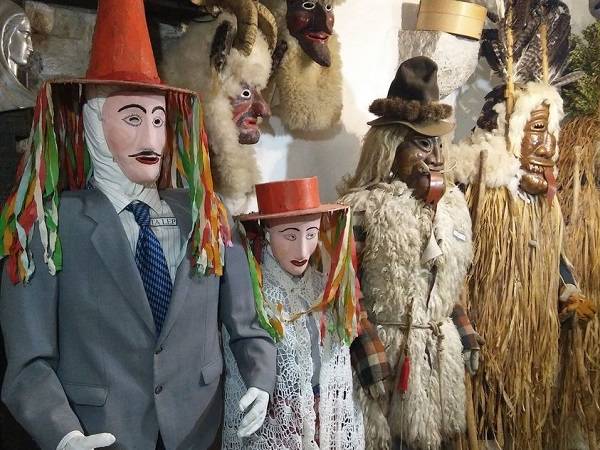- Media Centre
- News from Slovenia
- The Liški pustjé carnival masks enter the Register of Intangible Cultural Heritage
The Liški pustjé carnival masks enter the Register of Intangible Cultural Heritage
The Liški pustjé carnival masks enter the Register of Intangible Cultural Heritage
The Liški pustjé carnival masks and costumes from the Kanalski Kolovrat hills have great ethnological and cultural significance. In December, the masks were entered into the Register of Intangible Cultural Heritage of Slovenia.

The protection and development of the carnival tradition in the area of Kanalski Kolovrat hills is of great importance for the locals and also for Slovenia in general. Carnival preserves local characteristics and plays an important cultural symbol that helps to maintain local identity and distinctive cultural characteristics of the area. The villages in the Kanalski Kolovrat hills (Markiči, Bajti, Ukanje, Britof, Strmec, Lovišče and Melinki) are slowly being emptied, but they come to life during the carnival, as the locals look forward to the customs and traditions brought along with the Liški pustjé carnival masks. Also other visitors come to visit the area on this occassion, from Slovenia and abroad. This plays an important role in the visibility and promotes the tourist development of the area.
The members of the Liški pustje Ethnological Association work hard on keeping the tradition alive. For this very reason, a number of ethnological workshops is held in schools, where they show how costumes as well as the tinplate masks are made. Before each carnival, they also repair or reassemble masks and sew costumes.
The main characteristic of the Liški pustje carnival custom is the masks that are since 1947 made of beaten aluminum sheets. Before the First World War they were made of copper. Preparations for the carnival parade begin a month before Shrove Sunday, when members of the Liški pustjé Association meet in the evening and repair or make new carnival costumes. The main carnival event is on Shrove Sunday (called debelnica), when the masks parade through the villages of Markiči, Bajti, Ukanje, Britof, Strmec, Lovišče and Melinka and visit individual houses. Mostly younger men dress up in carnival characters. The central masks of the group are the carnival bride and groom that are also the ones to first enter the house, greet the master and mistress of the house and dance.
The Liški pustjé carnival masks can be admired during the whole year, by prior arrangement with the chairman of the Ethnological Association Branko Žnidarčič. He was also the one who helped to revive the carnival tradition in the area. Further information is available at the Soča Valley local tourist board.
Contacts
Global public relations and Marketing
e-mail address: press(at)slovenia.info
